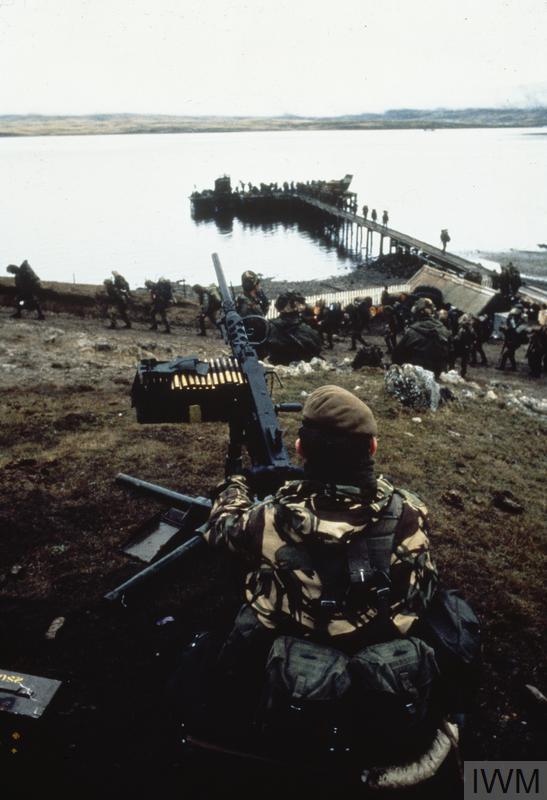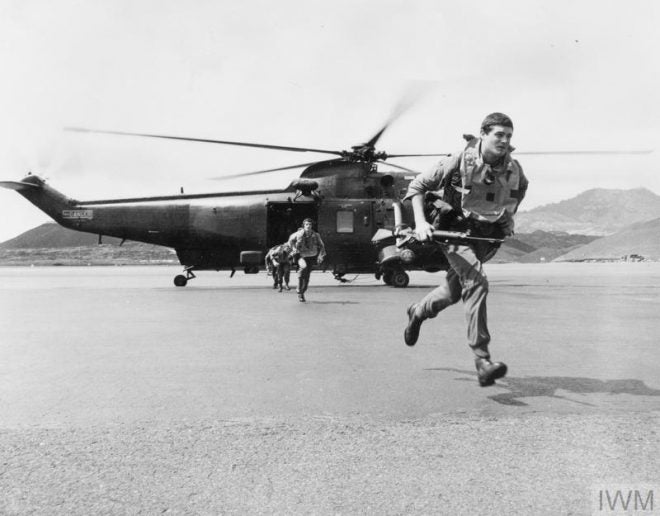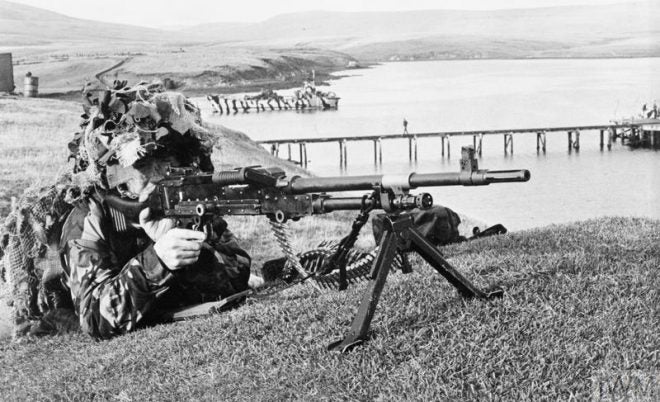Our Photo Of The Day goes back in time, to The Falklands Conflict in 1982. I wonder how many of our readers were even born then, some 40 years ago? The Falklands War between Argentina and the United Kingdom went on for ten weeks until Argentina surrendered. In total 907 people lost their lives.
The caption for the picture above reads: “A British sentry wearing full camouflage defends the landing site at San Carlos with a 7.62mm General Purpose Machine Gun. A landing craft from HMS FEARLESS is in the background.” (Copyright: © IWM. Original Source: http://www.iwm.org.uk/collections/item/object/205189464)

THE FALKLANDS CONFLICT, APRIL – JUNE 1982 (FKD 409) Two Royal Marines of 40 Commando defend the landing site at San Carlos with a Browning .5′ machine gun. A landing craft from HMS INTREPID is in the background. Copyright: © IWM. Original Source: http://www.iwm.org.uk/collections/item/object/205188146

THE FALKLANDS CONFLICT, APRIL – JUNE 1982 (FKD 346) A 0.5 inch Browning machine gun defends 5 Infantry Brigade’s landing at San Carlos on 2 June 1982. Copyright: © IWM. Original Source: http://www.iwm.org.uk/collections/item/object/205189240

THE FALKLANDS CONFLICT APRIL – JUNE 1982 (FKD 394) The San Carlos landings on 21 May 1982. Two Royal Marines of 40 Commando keep watch at dawn, armed with a 7.62mm General Purpose machine gun, on board the P & O liner CANBERRA. HMS FEARLESS is in the background. Copyright: © IWM. Original Source: http://www.iwm.org.uk/collections/item/object/205188144

THE FALKLANDS CONFLICT, APRIL – JUNE 1982 (FKD 382) Royal Marines of 40 Commando practice exiting from a Westland Sea King HC.4 at Wideawake Airport during the two weeks they spent training and reorganising at Ascension Island. Copyright: © IWM. Original Source: http://www.iwm.org.uk/collections/item/object/205188137
All photos and captions: Imperial War Museums
 Your Privacy Choices
Your Privacy Choices
